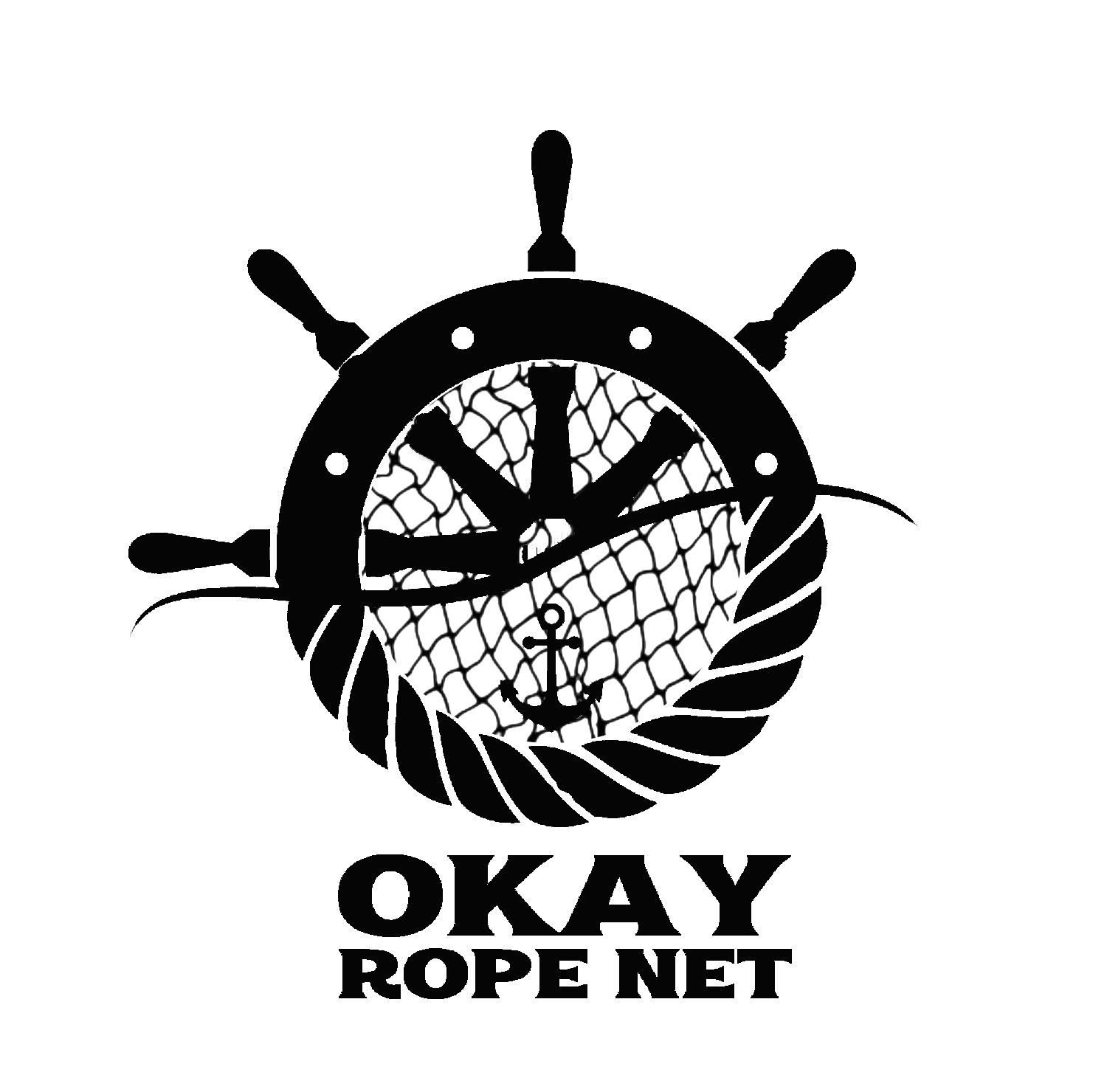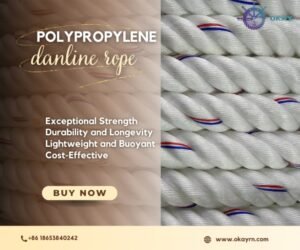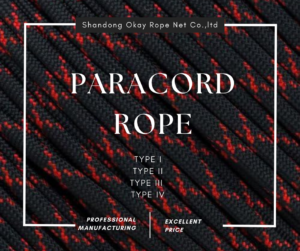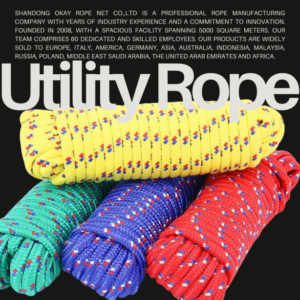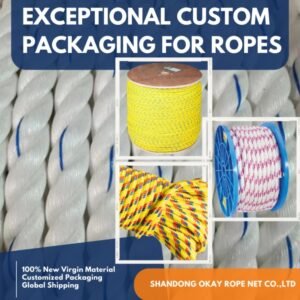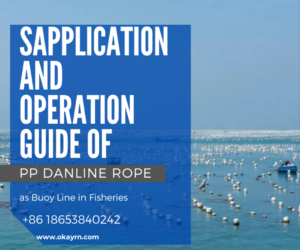In fisheries, buoy lines are crucial for ensuring that fishing nets maintain the correct position and shape in the water. PP Danline Rope, with its excellent buoyancy, strength, and resistance to corrosion, is an ideal choice for buoy lines. This article provides a detailed guide on selecting the appropriate rope diameter based on the size of the fishing net and expected water depth, tying knots, making connections, and deploying buoys and nets.
Selecting the Appropriate Rope Diameter and Length
Diameter Selection:
Small Fishing Nets (used in shallow waters and nearshore): Diameter between 6-8 mm. These are suitable for lighter nets and buoys.
Medium Fishing Nets (used in moderate depths and coastal areas): Diameter between 10-12 mm. These can handle medium-weight nets and buoys.
Large Fishing Nets (used in deep waters and offshore): Diameter of 14-16 mm or more. These are ideal for heavier nets and buoys, providing greater tensile strength and durability.
Length Selection:
The rope length should be 20-30% longer than the actual water depth. This accommodates water level changes and operational needs.
Knotting Methods: Figure-Eight Knot and Double Half Hitch
Figure-Eight Knot:
.Create a small loop at the end of the rope. Pass the end through the loop to form a figure-eight shape.
. Wrap the rope end around the main line. Pass it through the loop again.
.Tighten the knot. Ensure it is secure.
Figure-Eight Knot Diagram:
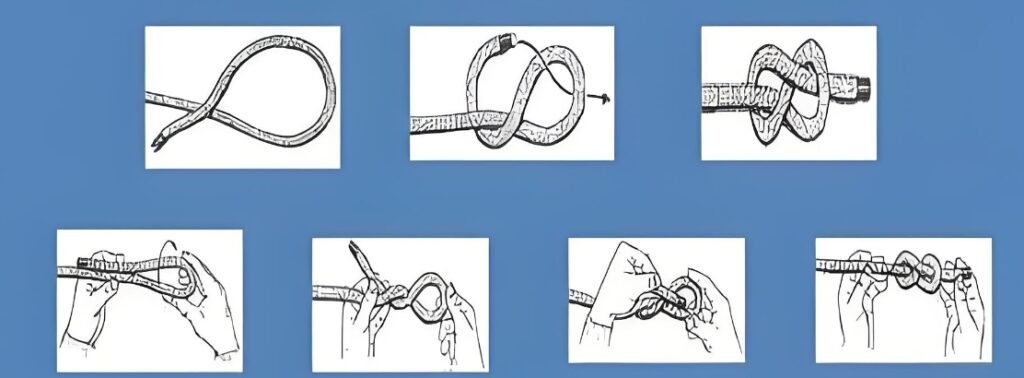
Double Half Hitch:
. Wrap the rope around the fixed object (such as the buoy’s attachment ring) twice.
.Create two loops over the fixed object. Pass the rope end through the loops.
.Tighten the knot. Ensure it is secure.
Double Half Hitch Diagram:
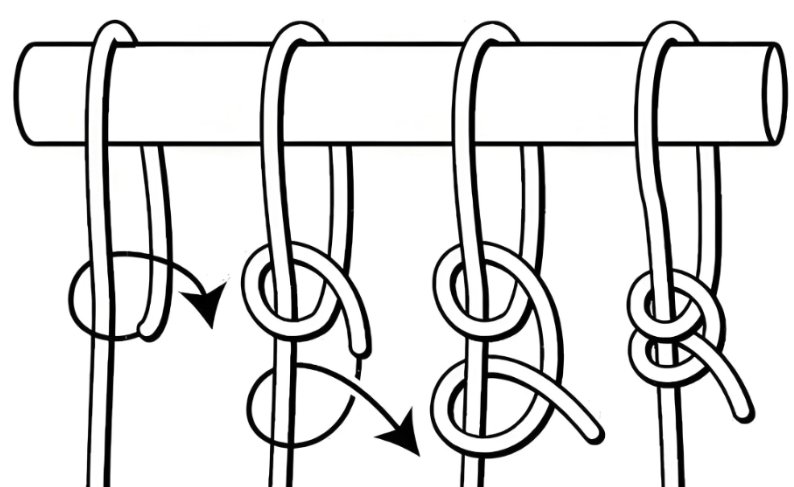
Connecting the Fishing Net
Select Connection Points: Choose multiple evenly distributed connection points on the fishing net. Typically, select points along the edges or corners.
Tie the Knots: Use a figure-eight knot or double half hitch. Attach the ends of the PP Danline Rope to the fishing net. Ensure each connection point is secure to prevent detachment.
Reinforce Fixation: For larger fishing nets, add extra wraps and knots at the main connection points. This enhances stability.
Deploying Buoys and Fishing Nets
Place Buoys: Position the buoys in the predetermined water area. Ensure even spacing between buoys. This maintains balance in the net.
Connect Buoys and Fishing Nets: Attach one end of the PP Danline Rope to the buoys. Attach the other end to the fishing net. Ensure all connection points are secure and reliable.
Adjust Positioning: Adjust the positioning of the buoys and nets based on water currents and wind direction. This ensures the optimal placement of the fishing net. Make fine adjustments by increasing or decreasing the rope length.
Inspect and Test: After deployment, conduct a thorough inspection. Ensure all knots and connections are secure. Perform a small-scale test. Ensure the buoys and net are functioning correctly.
Maintenance and Care
Regular Inspections: Regularly check the PP Danline Rope for signs of wear, especially at the knots and connection points. Replace the rope or retie the knots if wear or damage is detected.
Storage Environment: Store the rope in a dry, cool place when not in use. Avoid direct sunlight and high temperatures. This prolongs its lifespan.
Avoid Chemical Exposure: Prevent prolonged exposure to strong acids, alkalis, and other corrosive substances. This maintains the rope’s performance.
PP Danline Rope is widely used as buoy lines in the fisheries industry. It is lightweight, corrosion-resistant, and strong. By correctly selecting the rope’s diameter and length, using appropriate knotting methods, and ensuring proper deployment and maintenance, the fishing net can perform optimally and have a long service life.
For further inquiries or to order PP Danline Rope, please contact our sales team. We are committed to providing high-quality rope solutions to meet your various needs.
